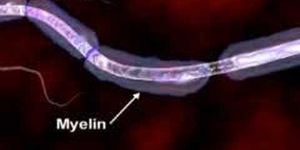Videos
What is Multiple Sclerosis
FEB 27, 2014 12:00 AM PST
Share
Oldest Rock on Earth Confirmed By Two Dating Methods
 A lot of excitement has been created by the study of a tiny zircon crystal that measures approximately two times the diameter of a human hair. While it isn't a particularly attractive or visually interesting piece of rock, this crystal that was removed back in 2001 from a rocky outcrop in Western Australia has been verified by two different measurement methods to be 4.4 billion years old, making it the oldest object on Earth. (Insert your own joke here, if you like). These findings were published in the recent edition of Nature Geoscience by a research team led by John Valley, a geoscience professor at the University of Wisconsin.
A lot of excitement has been created by the study of a tiny zircon crystal that measures approximately two times the diameter of a human hair. While it isn't a particularly attractive or visually interesting piece of rock, this crystal that was removed back in 2001 from a rocky outcrop in Western Australia has been verified by two different measurement methods to be 4.4 billion years old, making it the oldest object on Earth. (Insert your own joke here, if you like). These findings were published in the recent edition of Nature Geoscience by a research team led by John Valley, a geoscience professor at the University of Wisconsin.Due to natural erosion and plate tectonics, it's rare to find any rock formations that can date back to anywhere near the formation of the earth's crust. Thus the initial finding of 4.4 billion years was met with some skepticism.
The initial method of dating was a well-accepted method using the eventual radioactive decay of uranium into an isotope of lead. The decay proceeds at a predictable rate, so the age can be determined by measuring the amount of lead isotope and comparing it to the remaining amount of uranium. This only works in a closed system-with no uranium or lead isotopes entering or exiting the piece of zircon to be tested. The actual process of uranium decay involves release of a high-speed alpha particle, which could theoretically displace some atoms of the lead isotope.
The research team was able to confirm the age using another, more sophisticated method known as atom-probe tomography. In this method, a laser literally evaporated ions from the sample while one set of detectors determined the original position in the beginning sample and another set determined its composition. In essence, this built a 3D atomic-level map of the sample, and allowed the team to count lead atoms and identify their position. They determined that lead was being moved around within the sample, but not enough to distort the age determined by the radioactive decay method.
Since the Earth itself was formed as a mass of molten rock 4.5 billion years ago, this finding suggests that the earth's crust formed only about 100 million years after the planet's creation. The cooling required to form the Earth's crust means that it's possible that Earth could have sustained life even earlier than previously thought. The oldest known evidence of life is fossilized stromatolites, produced about 3.4 billion years ago from an ancient form of bacteria.
Also, since it's been theorized that our moon was formed by a massive collision between the Earth and a celestial body approximately the size of Mars, this finding implies that the collision had to take place within a relatively narrow window in geological terms. For the moon to form from such a collision, the collision had to take place while the Earth was still in a molten state. So far, this fits in with the previous dating of Moon rocks as being 4.44 billion years old.
While there is no evidence yet that life existed on Earth between 3.4 and 4.4 billion years ago, this work suggests that it may have been possible-and fossils that can prove this may exist somewhere, just waiting to be discovered.
You May Also Like
Loading Comments...








